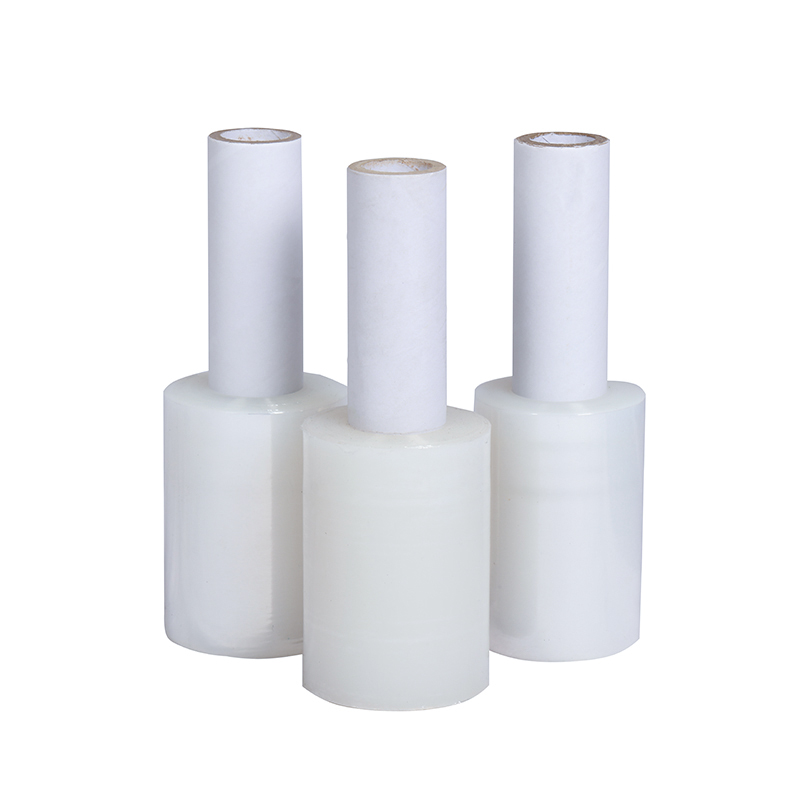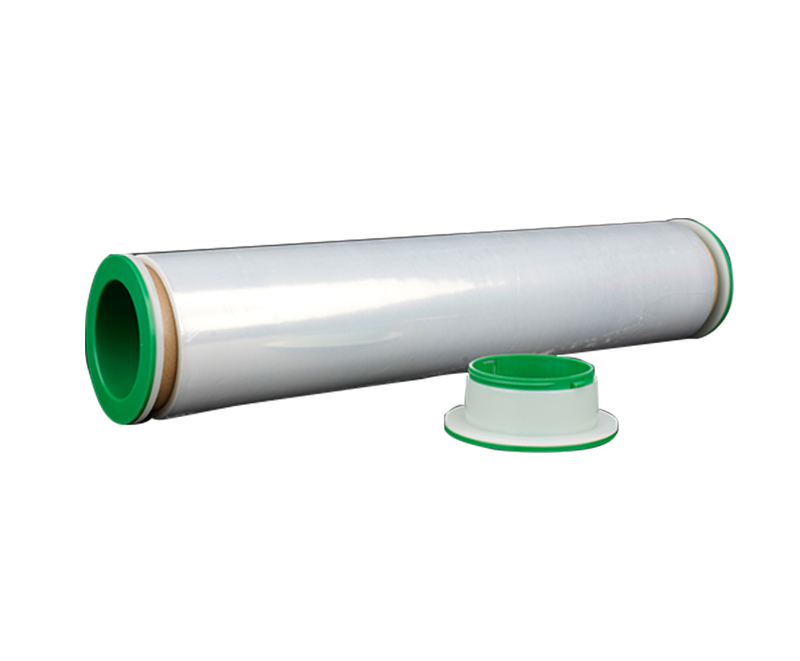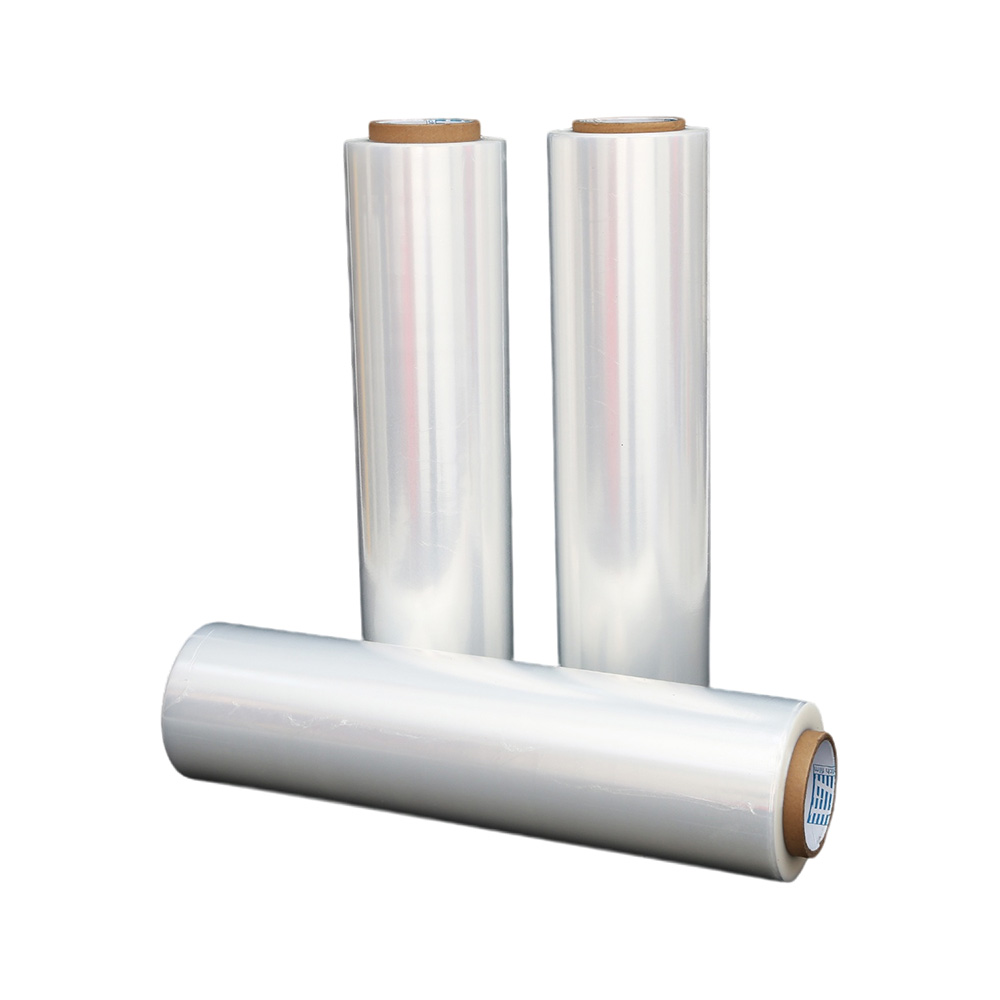Unraveling the Science: What Factors Influence the Optimal T
Source:Unraveling the Science: What Factors Influence the Optimal TTime:2023-07-27Visitors:
Introduction
In the fast-paced world of modern commerce, ensuring the safe and secure transportation of goods is paramount. Among the arsenal of packaging materials, Bundling Stretch Film stands out as a versatile and efficient solution for bundling and protecting various products. As a prospective buyer seeking to make the best packaging decisions, understanding the factors that influence the optimal thickness of Bundling Stretch Film is crucial. This comprehensive guide will explore the scientific aspects behind this essential packaging material, providing you with the knowledge to make informed choices.
Whether you are a part of the logistics, manufacturing, or agricultural sector, finding the right Bundling Stretch Film manufacturer and wholesale supplier is essential. Choosing the appropriate film thickness can make all the difference in ensuring your products' safety during transit and minimizing potential damage or losses.
Understanding Bundling Stretch Film Thickness
Bundling Stretch Film, often called pallet wrap or stretch wrap, is a highly elastic and pliable material widely used for securing and stabilizing goods during storage and transportation. Its primary function is to tightly bind items, preventing them from shifting, tumbling, or becoming damaged while in transit. One of the critical parameters that directly impacts the performance of Bundling Stretch Film is its thickness.
The thickness of the film refers to the measurement of the material's gauge or micron, indicating the depth of the film layer. This thickness significantly affects the film's ability to withstand various forces, such as tension, compression, and puncture resistance. As a result, choosing the optimal thickness is essential for achieving the desired level of protection and load stability.
Factors Influencing Optimal Thickness
Several key factors come into play when determining the ideal thickness of Bundling Stretch Film for your specific application. Let's explore some of the primary considerations:
1. Load Weight and Size
The weight and dimensions of the bundled items directly impact the choice of Bundling Stretch Film thickness. Heavier and larger loads impose more significant stress on the film, requiring a thicker gauge or micron measurement to provide adequate support and prevent load failure.
2. Handling and Transportation Conditions
The specific handling and transportation conditions your packaged goods will experience also play a critical role in determining the necessary film thickness. If your products are likely to undergo rough handling, encounter sharp edges, or endure long-distance shipping, opting for a thicker film can ensure superior protection against potential damage.
3. Stacking Height and Storage Duration
The height of the stacked pallets and the anticipated duration of storage directly influence the required thickness of the Bundling Stretch Film. Taller stacks exert more pressure on the lower layers, necessitating a thicker film to withstand the increased compression forces. Similarly, longer storage periods may demand thicker film layers to maintain load integrity over time.
Performance Considerations
When it comes to securing your valuable products for transportation and storage, the performance of Bundling Stretch Film is of utmost importance. The film's ability to withstand various challenges and maintain load integrity directly correlates with its thickness. Let's delve into some key performance considerations:
1. Load Containment and Compression
Choosing the right thickness of Bundling Stretch Film is crucial for ensuring proper load containment. A film that is too thin may not provide sufficient tension, leading to load shifting and potential product damage during transit. On the other hand, an appropriately thick film can tightly hold the bundled items together, minimizing the risk of load failure and ensuring that your goods reach their destination in pristine condition.
Additionally, the thickness of the film influences its compression resistance. When stacked, the bottom layers of the pallet bear the weight of the entire load. Thicker Bundling Stretch Film offers enhanced compression strength, reducing the risk of pallet collapse and safeguarding your products from being crushed during storage or shipping.
2. Puncture and Tear Resistance
The thickness of the film also directly affects its puncture and tear resistance. Thin films are more susceptible to punctures and tears, which can compromise the integrity of the packaging and expose your goods to potential damage from external elements. By opting for a thicker film, you enhance its ability to withstand impacts, abrasions, and sharp edges, providing an added layer of protection for your products.
Furthermore, thicker Bundling Stretch Film exhibits excellent tear resistance, reducing the likelihood of small tears turning into significant failures during transportation or handling processes.
3. Stretchability and Elastic Recovery
Finding the right balance between stretchability and elastic recovery is essential for optimal load stability. Thicker films generally offer higher stretchability, allowing you to wrap the pallets tightly and securely. This stretchability ensures that the film conforms closely to the bundled items, reducing the chances of shifting.
Equally important is the film's elastic recovery. After being stretched during the wrapping process, the film should be able to bounce back and maintain constant tension around the load. The optimal thickness of the Bundling Stretch Film ensures the right balance between stretchability and elastic recovery, contributing to a secure and stable bag.
Cost vs. Performance Analysis
As a prudent buyer, balancing cost-effectiveness and performance is paramount when selecting the appropriate Bundling Stretch Film thickness. While thicker films generally offer superior protection and load stability, they also come at a higher cost. They are conducting a fee vs.
Performance analysis can help you make an informed decision that aligns with your budget and packaging requirements.
Consider the following factors when performing the cost vs. performance analysis:
1. Load Value and Risk
Evaluate the value of the goods being packaged and the potential risks they face during transportation. If your products are high-value or fragile, investing in a thicker Bundling Stretch Film can be a wise decision to mitigate the risk of damage and potential losses. On the other hand, for lower-value items that are less susceptible to injury, a thinner film may provide adequate protection while reducing packaging costs.
2. Transit Distance and Handling
The distance your products will travel, and the handling conditions they will encounter are critical factors in determining the required film thickness. To withstand additional stresses, a thicker film is recommended for long-distance shipping and rough handling environments. Conversely, for short-distance transportation with gentle handling, a thinner film might suffice while keeping expenses in check.
3. Pallet Configuration and Load Type
The type of products being packaged and the pallet configuration can impact the film's performance requirements. Irregularly shaped or heavy items may necessitate a thicker film to maintain load stability. Similarly, taller pallet stacks may require thicker film layers to resist compression forces. Analyzing the specific load characteristics will help you determine the most suitable thickness for your unique application.
4. Film Yield and Wrapping Efficiency
Thinner films generally offer higher yields per roll, resulting in more wraps per roll and potentially reducing material costs. Additionally, thinner films are easier to stretch, requiring less effort during the wrapping process, which can improve packaging efficiency and reduce labor costs.
5. Environmental Considerations
In recent years, sustainability has become a crucial consideration in packaging decisions. Thicker films may use more material and result in increased waste generation. If environmental impact is a priority for your business, exploring eco-friendly options, or using thinner films with enhanced performance characteristics, can align with your sustainability goals without compromising load protection.
By conducting a comprehensive cost vs. performance analysis, you can balance the initial investment and long-term benefits, optimizing your packaging solution for effectiveness and cost efficiency.
Industry-Specific Applications
The versatility of Bundling Stretch Film extends to various industries, each with unique packaging requirements. Let's explore how different sectors benefit from the optimal selection of film thickness:
1. Logistics and Warehousing
The safe and efficient transportation of goods is essential in the logistics and warehousing industry. Optimal Bundling Stretch Film thickness ensures that pallets remain stable during loading, unloading, and transit, reducing the risk of product damage and maximizing space utilization. Thicker films are favored for heavy and high-value shipments, while thinner films can suffice for lighter loads, helping logistics companies manage costs without compromising safety.
2. Manufacturing and Distribution
Manufacturing plants and distribution centers often handle various products with varying shapes and sizes. The right Bundling Stretch Film thickness ensures proper load containment and protection during distribution. Thicker films are ideal for securing heavy machinery and equipment, while thinner films may be suitable for lighter products and internal material handling.
3. Agriculture and Horticulture
The agricultural sector deals with unique packaging challenges, mainly when bundling produce or nursery items. The choice of Bundling Stretch Film thickness is influenced by factors such as product type, moisture sensitivity, and transport conditions. A thinner film with sufficient stretchability is preferred for delicate fruits and vegetables, while sturdier plants may require thicker films for enhanced support and protection.
4. E-commerce and Retail
With the rise of e-commerce, proper packaging has become crucial to ensure products arrive intact at customers' doorsteps. Bundling Stretch Film thickness is vital in safeguarding products during the last-mile delivery. For fragile items, a thicker film provides extra protection against potential impacts during transit, enhancing customer satisfaction and minimizing return rates.
5. Furniture and Home Appliances
The furniture and home appliance industry relies on Bundling Stretch Film for the secure transportation of bulky and delicate items. Thick films offer excellent load stability and puncture resistance, safeguarding these high-value products from potential damage during handling and delivery. Retailers can benefit from using the optimal thickness, reducing claims for damaged goods, and enhancing customer experience.
Sustainability Considerations
As businesses increasingly focus on sustainability, choosing the right Bundling Stretch Film thickness can contribute to environmental stewardship. Thicker films generally result in more material usage and waste generation. Companies can reduce their ecological footprint by opting for eco-friendly, thinner films with enhanced performance attributes while ensuring adequate packaging.
Sustainable Bundling Stretch Film options may include recycled materials or bio-based films derived from renewable resources. These environmentally friendly alternatives maintain load protection while aligning with eco-conscious practices.
Choosing the Right Thickness: Practical Guidelines
Selecting the optimal Bundling Stretch Film thickness involves carefully assessing specific packaging requirements. Here are practical guidelines to help you make the right choice:
- Evaluate Load Characteristics: Consider the bundled items' weight, size, and shape to determine the film's load-bearing requirements.
- Assess Transit and Storage Conditions: Analyze the transportation distance, handling conditions, and expected storage duration to identify the necessary film durability.
- Cost vs. Performance Analysis: Conduct a thorough cost vs. performance analysis to find the balance between effectiveness and cost-effectiveness.
- Industry-Specific Needs: Understand the unique requirements of your industry to tailor the film thickness to suit your products and application.
- Environmental Impact: Factor in ecological considerations and explore sustainable film options that align with your business's sustainability goals.
By following these guidelines, you can confidently select the optimal Bundling Stretch Film thickness, ensuring your products' safe and secure transportation while optimizing packaging costs and reducing your environmental impact.
Conclusion
Understanding the factors that influence the optimal thickness of Bundling Stretch Film is essential for making informed packaging decisions. This versatile and elastic material is critical in securing goods for transportation and storage across various industries. By carefully considering the key factors discussed in this article, you can tailor the film thickness to meet your application needs while ensuring load stability, protection, and cost-effectiveness.
As you select the right Bundling Stretch Film thickness, remember to evaluate the weight and size of the bundled items, the handling and transportation conditions they will encounter, and the stacking height and storage duration. These aspects directly impact the film's performance and, subsequently, the safety of your products during transit.
Moreover, considering load containment and compression, puncture and tear resistance, and the balance between stretchability and elastic recovery will help you optimize load stability and ensure your products reach their destination unscathed.
While cost-effectiveness is essential, prioritize load value and risk, transit distance and handling, pallet configuration and load type, film yield, and wrapping efficiency when conducting a cost vs. performance analysis. This balanced approach will help you strike the proper equilibrium between budget constraints and the protection required for your goods.
Furthermore, consider the specific needs of your industry and explore sustainable Bundling Stretch Film options to support your business's environmental goals while ensuring adequate packaging.
With this comprehensive understanding, you can confidently collaborate with Bundling Stretch Film manufacturers and wholesale suppliers to procure the ideal film thickness for your packaging needs. Remember that the right choice will not only enhance the safety and integrity of your products but also contribute to streamlined logistics and increased customer satisfaction.
In a dynamic and competitive market, making the right packaging decisions is a strategic advantage that elevates your brand and fosters lasting customer relationships. By unraveling the science behind Bundling Stretch Film thickness, you are equipped to tackle the challenges of modern packaging, ensuring your products are securely bundled and ready to embark on their journey to customers worldwide.
Recommended Products
Ranked in the same article
- how to use the stretch film technology to r
- How can we get detailed price list?
- Five common quality problems of PE protecti
- Plastic film degradation
- How to guarantee punctual shipment for our
- Gauge to Micron and Millimetre Conversion G
- What is the difference between stretch film
- Testing the permeability of stretch film
- Stretch film temperature requirements
- Electrical wire film VS electrostatic film
- Why insufficient transparency of stretch w
Latest news articles
- How to check the quality of PE stretch film
- Stretch Film Wrap: Unraveling Its Benefits
- Bundling Stretch Film: Optimize Your Packag
- What Properties Ensure Effective Cold Chain
- The 133rd Spring Canton Fair
- How can PE stretch film be cut better?
- Advantages of white engineering film
- What is the Difference Between Magic Tape a
- The significance of using PE electric wire
- Factors affecting viscosity of PE stretch f
- The Ultimate Guide to Choosing the Right Ma



